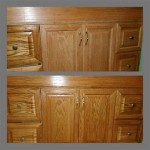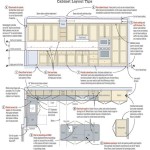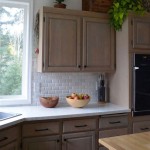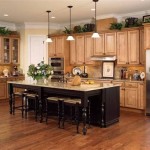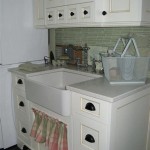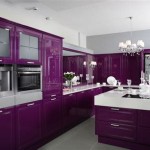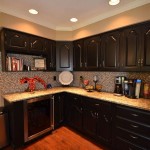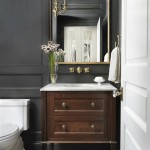```html
Maximizing Storage Space With Cabinets, Shelves, and Doors
Effective storage solutions are essential for maintaining an organized and functional living or working space. Cabinets, shelves, and doors, when strategically implemented, can dramatically increase available storage, declutter interiors, and enhance the overall aesthetic appeal of a room. This article will explore various strategies and considerations for optimizing storage capacity using these fundamental elements.
The integration of cabinets, shelves, and doors extends beyond simple organization; it involves a thoughtful evaluation of space utilization, accessibility, and the specific storage requirements of the occupants. Failing to optimize these elements can lead to wasted space, inefficient workflows, and a general sense of disorganization. Conversely, a well-planned storage system can transform a cramped and cluttered environment into a streamlined and inviting area.
Understanding Vertical Space
One of the most underutilized assets in any room is vertical space. Often, floor space is prioritized, neglecting the significant storage potential above eye level. Cabinets and shelves that extend towards the ceiling can significantly increase storage capacity without encroaching upon valuable floor area. Tall cabinets, for instance, are ideal for storing infrequently used items, seasonal decorations, or bulky objects. Strategically placed shelves can house books, decorative items, and organizational bins, maximizing the use of wall space that would otherwise remain unoccupied.
When planning vertical storage, accessibility is a critical consideration. Items stored at higher elevations may require the use of step stools or ladders. Therefore, it is prudent to reserve these spaces for articles that are not accessed on a daily basis. Items used more frequently should be stored at lower, more reachable heights. For example, kitchen cabinets benefit from storing everyday dishes on lower shelves and less frequently used appliances on higher shelves. Similarly, in a closet, seasonal clothing can be stored on high shelves, while frequently worn garments are kept at accessible levels.
The design of vertical storage should also complement the overall aesthetic of the room. Cabinets and shelves can be integrated seamlessly into the existing décor by selecting appropriate materials, finishes, and styles. Built-in cabinets, for example, offer a more permanent and refined look compared to freestanding units. Open shelving can create a more airy and visually appealing effect, particularly when displaying carefully curated items. The choice between open and closed storage depends on factors such as the desired level of visibility, the need for dust protection, and the overall design scheme.
Optimizing Cabinet Interiors
The interior configuration of cabinets plays a crucial role in maximizing storage efficiency. Simply filling cabinets with generic shelving often leads to wasted space and disorganized contents. A more strategic approach involves custom-designed layouts that cater to the specific items being stored. Pull-out shelves, for instance, can significantly improve accessibility by bringing items at the back of the cabinet to the front. This eliminates the need to rummage through cluttered shelves, making it easier to find and retrieve what is needed.
Dividers and organizers within cabinets can further enhance organization. These accessories can be used to separate different types of items, prevent them from becoming jumbled together, and maximize the use of vertical space. For example, kitchen cabinets can benefit from dividers for pots and pans, spice racks, and utensil organizers. Bathroom cabinets can be fitted with dividers for toiletries, makeup, and hair accessories. The key is to tailor the interior layout to the specific contents of the cabinet, ensuring that every item has a designated place.
The installation of specialized hardware can also optimize cabinet interiors. Soft-close hinges and drawer slides, for example, prevent slamming and reduce wear and tear on the cabinet. Under-cabinet lighting can illuminate the interior, making it easier to find items in dimly lit areas. These seemingly small details can have a significant impact on the overall functionality and user experience of the storage system.
Drawers within cabinets offer a versatile storage solution, particularly for smaller items. Unlike shelves, drawers provide enclosed storage, preventing items from falling out or becoming obscured. Deep drawers can accommodate bulky items, while shallow drawers are ideal for storing small accessories. Drawers can also be fitted with dividers and organizers to further enhance their functionality.
Strategic Door Placement and Functionality
Doors are an integral part of cabinet design, providing enclosure, protection, and aesthetic appeal. The type and placement of doors can significantly impact the accessibility and functionality of the storage system. Traditional hinged doors are the most common type, but other options, such as sliding doors, bi-fold doors, and pocket doors, can be more appropriate in certain situations.
Sliding doors are particularly useful in tight spaces where a swinging door would obstruct movement. They glide horizontally along a track, allowing access to the cabinet interior without requiring additional clearance. Bi-fold doors, also known as folding doors, are another space-saving option. They fold in on themselves, reducing the amount of space required for operation. Pocket doors slide into a recess in the wall, completely disappearing from view when open. This type of door provides the greatest degree of space saving but requires more extensive installation.
The material and style of cabinet doors should complement the overall design of the room. Solid wood doors offer a classic and durable option, while glass doors provide a more modern and visually appealing effect. Mirrored doors can create the illusion of more space, making them particularly suitable for small rooms. The choice of hardware, such as knobs and pulls, can also contribute to the overall aesthetic of the cabinet.
The functionality of cabinet doors can be further enhanced with specialized features. Soft-close hinges prevent slamming and reduce noise. Touch-latch mechanisms allow doors to be opened with a gentle push, eliminating the need for handles or knobs. These features not only improve the user experience but also extend the lifespan of the cabinet.
Beyond traditional cabinet doors, consider the incorporation of hidden doors. These can seamlessly blend into a wall or bookshelf, concealing storage spaces or even entire rooms. Hidden doors can add an element of surprise and intrigue to a space while maximizing storage capacity and maintaining a clean aesthetic.
Ultimately, maximizing storage space with cabinets, shelves, and doors requires a holistic approach that considers both functionality and aesthetics. By carefully evaluating space utilization, accessibility, and design considerations, it is possible to create a storage system that is both efficient and visually appealing. This results in a more organized, functional, and enjoyable living or working environment.
```
Cabinet Storage Ideas To Maximize Home Space
27 Small Kitchen Storage Ideas Clever Ways To Optimize Space

How To Save Space With Door Mounted Storage

10 Ideas For Cabinet Storage To Help You Conquer Clutter

How To Maximize Storage In Your Wardrobe Beautiful Homes

Turn Your Traditional Kitchen Cabinet Into A Built In Pantry Maximize Storage Space Whil Home Decor Remodel Small Design

25 Best Built In Storage Ideas And Designs For 2024

60 Clever Cabinet Organization Tips To Double Your Storage 2024

Kitchen Cabinet Trends Custom Design To Maximize Your Storage Space

Smart Storage Solutions For Inium Living Maximizing Closet And Cabinet Space Asterra Built You
Related Posts

